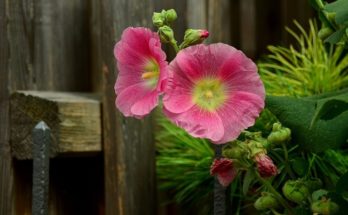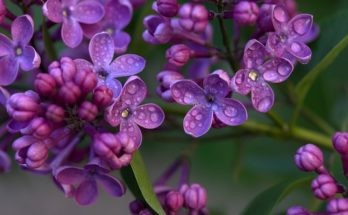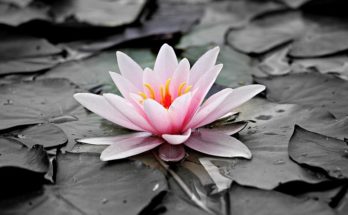Flower symbolism is something that got transferred from generation to another and was always kept as an important part of tradition. We can see flower symbols on national clothing, dresses, and various objects and in works of art of many famous artists. Flower symbolism is full of valuable information that can teach us about history and culture of many civilizations and nations.
Flower symbolism is there to help us learn more about flowers alone but also about the historical and symbolical value that they hide behind them. Flowers symbols were used by artists and poets for centuries to express the beauty and depth of every work of art.
To express a feeling or a certain opinion, it was always easier to use symbols than to say directly what you mean. When something needed to be kept as a secret or it needed to be transferred to others as a secret code, symbols (among them flower symbols) were used for exactly that. They are nature’s true works of art that help us share our deepest feelings with the people we love.
Flowers were especially valuable because they had healing abilities and they always captivated our attention with their beauty, scents and shapes.
In today’s text we will be talking about the Edelweiss flower and the hidden symbolism behind it. This unusual flower is definitely an eye-catcher in every sense and it deserved to be analyzed in a symbolic way. Even though they are only native to some world countries they are now available in almost all parts of the world and offer us a chance to see them in their full glory.
Meaning of the Edelweiss flower
Every flower has its own symbolic meaning and significance. Just like roses are naturally symbols of love and romance, the Edelweiss flower has its own symbolical value. This unusual flower is a symbol of several things, and the symbolic value highly depends on the culture that influenced this symbolical meaning and all the other cultural factors. One of the most important factors is cultural influence and the cultural development of each individual flower sort.
The Edelweiss flower has the meaning of:
Adventure
- This, appearance wise, unusual flower is a symbol of adventure and many see it as a perfect example of how we should all enjoy life more and let us be who we truly are. These flowers usually grow in difficult places but with their beautiful appearance they withstand the test of strength and time.
Notoriety
- This is another classical symbolical meaning of the Edelweiss flower. These flowers are symbols of notoriety in a completely sense of the word. The reason why this flower is a symbol of such a notorious quality is because of the reputation it has among many cultures of the world. Not many people can find this flower or obtain it, which is the reason why some link it to this interesting symbolical meaning.
Edelweiss Flower – Etymological meaning
The Edelweiss flower got its name or it was inspired by another mountain flower called Leontopodium alpinum, which is a flower that grows on heights up to 3000 meters. Edelweiss flower belongs to the family of daisies and sunflowers and it is mostly used in the makeup industry.
This flower contains one sort of fine white hairs that grow on its flower and create a very silvery appearance on the flower itself. The edelweiss flower’s name comes from two German words. These words are “edel” which means noble and “Weiss” means white. There are many other names that being used in countries around the globe, but this name is the most prominent one.
Edelweiss Flower – Symbolism
Edelweiss flower was used in the 19th century as a symbol of purity of the region around the Alpe and it was a flower highly respected by the people who lived there. In a novel written by Berthold Auerbach called “Edelweiss”, it is described how difficult it is to get the Edelweiss flower since they grow on heights up to 3000 meters.
Another symbolic use of this flower is present in the Swiss army, where the highest ranked officers get a badge that is shaped like the Edelweiss flower. this flower is also the symbol of Austrian. Hungarian alpine troop that was established by Franz Joseph I. the Edelweiss flower is often linked to the World War II and there is even a song devoted to the WW II army called “Es War Ein Edelweiss” (“There was once an Edelweiss flower”). This flower is also the symbol of the Bulgarian Tourist Union it is the main plot subject in the movie Asterix in Switzerland. Song written by the band Moondog was inspired by this unusual flower and it was called “High on a Rocky Ledge”.
Edelweiss Flower – Color meaning
Edelweiss flower comes only in one color and this color is white. Color white is a symbol of clarity, innocence and purity. This flower is interesting because of its nature and appearance. Color white symbolizes something completely different than this flower.
Edelweiss flowers rests on the highest planes and mountains and it is everything but weak or gentle which are the associations with the color white. Edelweiss flower even has color white in its name, which is understandable because of its white color. Like I mentioned earlier this flower is a symbol of something notorious but also a symbol of adventure and reaching beyond your wildest dreams.
The Edelweiss flower is a perfect gift for someone who is courageous and unique, and for someone who is prepared to go to great lengths to achieve his goal. This person has to be someone who has a strong nature and strong energy, no matter what his age or gender is.
The Edelweiss flower is going to send a strong message to this person and let everyone know that this person is someone you highly respect and that your friendship is something you greatly value.
Edelweiss flower – Botanical facts and characteristics
Stevius is a perennial herbaceous plant from Asteraceae. It works best in Mediterranean (subtropical) and moderate continental climates, and grows in the colder areas as a one-year plant. The stevium leaves contain steviozide and rebaudiozid A and six other glycosides, which are extremely tasteless. The leaves are very sweet, thirty times slower than sucrose sugar. Under higher sunlight and higher temperatures, the plant will produce a larger amount of leaf mass for growing.
Stevia is a bushy plant whose stems can reach 60 to 80 cm. The leaves are green, with slightly rounded tips, 5 cm long and 2 cm wide. The root is branched. Stevia seeds are long lasting and up to three mm long. Two types of seeds can be distinguished – black and white. Black is considered to be of better quality since germination of such seeds is 78% and twice as harder than white. The flowers are white and tiny.
The best results in stevia breeding are achieved in areas where temperatures range between 15 and 30 ° C and where high temperature differences occur between day and night. It is resistant to low temperatures, and the ideal germination temperature is 20 ° C. Temperatures of about 5 ° C will stop its growth. In its natural habitat it is a perennial plant that can live from 4 to 5 years. In colder climatic conditions, it approaches it as a one-year culture, since roots are often removed from the soil and leaves to be planted next year, as during the winter period it would not freeze.
The optimal amount of precipitation for stevia cultivation is from 1.500 to 1.700 mm per year. The dew has an extremely negative effect on the plant and will result in drying the leaves, which is to be streaked and cultivated. The water in the soil should not collect around the roots, as it will cause it to rupture.
Stevia has no great demands on the soil, but prefers sandy, cheeky and clay soil. It is important that the soil is well drained and ground and the soil is slightly sour (pH 4-7,5). It is necessary to pay attention to the fact that the stevium does not bear the salty soil.
Deep plowing is required for a month before planting, at a depth of 30 to 40 cm. It is advisable to lift the beams before planting, as this will reduce water retention. If there is a risk of drought, it is necessary to introduce the irrigation system of the drop.
For good quality yield, it is recommended to use nitrogen or organic fertilizers. Poor fertility should certainly be replenished. Usually it is recommended to inject 20 to 40 t / ha of organic fertilizer and 60 kg of nitrogen, 23 kg of phosphorus and 180 kg of potassium per hectare of surface.
The biggest problem with stevia breeding is the poor germination of seeds, which causes their high market price. Since black seeds have an extremely high germination of white, it is important to pay attention when selecting seeds when planting.
In addition to genetically, stevia can be propagated and vegetatively utilized by root cuttings. From older plants, they take root roots and rain as an independent plant.
Cultivation of stevia from seeds should be carried out indoors, ie greenhouses and greenhouses, which should reflect a temperature of 21 to 24 ° C to ensure proper growth and development. The growth of the seedlings is slow and for seven to eight weeks they are able to withstand transplantation on the outdoor terrain.
On a moderate area of stevia seedlings, in May, rain on the outdoor terrain, when there is no danger of spring frosts. When planting, it is recommended to use a longitudinal spacing between plants of 80 to 100 cm and a cross-section of 30 to 40 cm, creating a body of 4,000 to 6,000 plants per m2. In order to prevent weed development, PE foil is placed on the ground.
The flowering of stevia encourages shortening of the day, and it is in our bloom that blooms from late summer to late fall. The harvest is done in September, and it is recommended that the harvest begin immediately after the flowering begins.
In terms of stevia breeding as a one-year crop, the stems are cut directly above the earth’s surface, and if grown as a multi-year crop, it is advisable to leave 15 cm of stems so that the plant can recover and grow again. The glycoside content in the leaves is affected by the time of the day and it is the biggest in the morning and in the morning. Therefore, stevia harvesting should be done until 11 o’clock in the morning. The yield varies from 2,500 to 4,500 kg of dry leaves per hectare. From tons of massive leaves, about 280 kg of dry leaves is formed.
Edelweiss Flower – Secret message
Flower symbolism is there to help us learn more about flowers alone but also about the historical and symbolical value that they hide behind them. Flowers symbols were used by artists and poets for centuries to express the beauty and depth of every work of art. Just like flowers have their own symbolical meaning and symbolism, they are also hiding a message we all need to understand and get to know.
The Edelweiss flower is telling you to always be courageous and to never be afraid of the heights. There is something very rewarding waiting for you on top of the mountain if only you have the courage to reach out for it. this beautiful flower is not only interesting because of its appearance it is also interesting because it withstands the test of time and it fights against all the difficult living condition it gets exposed to on the top of the lonely mountain. Gift Edelweiss flowers to someone who is strong and independent and to someone who is not afraid to be whom he really is. This flower will look gorgeous in your backyard and garden and it will definitely make others wonder how you managed to get to one of the most desired flowers in the world.





